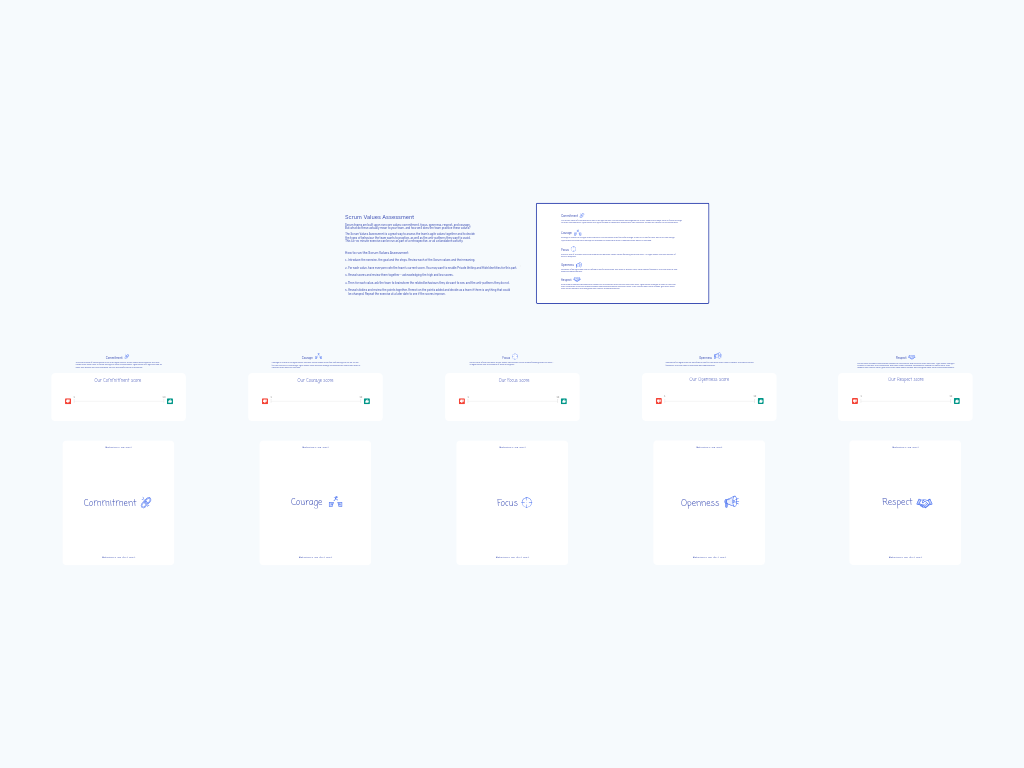Double Diamond: Design Thinking Framework for Problem Solving
The Double Diamond is a powerful visualization framework for design thinking and innovation that guides teams through a structured approach to problem-solving. Developed by the Design Council, this methodology helps teams explore broad possibilities before narrowing their focus to deliver effective solutions.
What Is the Double Diamond Framework?
The Double Diamond represents a four-stage design process that alternates between divergent thinking (exploring options) and convergent thinking (making decisions). It visualizes how teams should intentionally expand their thinking to generate possibilities before narrowing down to specific solutions.
The framework consists of two diamonds representing:
- The Problem Space (first diamond) - Getting the right idea
- The Solution Space (second diamond) - Getting the idea right
Each diamond contains a divergent phase (where possibilities expand) and a convergent phase (where options are refined and focused).
Benefits & When to Use the Double Diamond
The Double Diamond is particularly valuable when:
- Teams are tackling complex problems without clear solutions
- You need to ensure you're solving the right problem, not just implementing the first solution
- Cross-functional teams need a shared understanding of the design process
- Projects require both creative exploration and disciplined execution
Benefits include:
- Prevents teams from jumping to solutions before understanding the problem
- Creates a balanced approach between exploration and focus
- Provides a visual language for discussing where you are in the process
- Works for any innovation challenge, not just traditional design projects
How to Run a Double Diamond Session
Introduce the framework (10 minutes)
- Explain the purpose of the workshop and the four stages of the Double Diamond
- Clarify that this is an iterative process, not a linear one
- Set expectations for how decisions will be made throughout
Discover Stage - Diverge (30-45 minutes)
- Start with documenting the general problem statement to the left of the diagram
- Populate the Discover section with all research findings, user insights, and context
- Focus on understanding, rather than assuming, the problem
- Encourage team members to share different perspectives and data points
Define Stage - Converge (30 minutes)
- Review all discoveries to identify patterns and key insights
- Refine the scope of your problem statement based on what you've learned
- Create a tightly-focused problem definition that clearly articulates what needs to be solved
- Gain team alignment on the redefined problem statement
Develop Stage - Diverge (45-60 minutes)
- Brainstorm all possible solutions without judgment or filtering
- Generate a wide range of ideas that address the defined problem
- Select the most promising ideas for prototyping or experimentation
- Gather feedback and data to help evaluate different approaches
Deliver Stage - Converge (30 minutes)
- Refine the solution based on insights from testing and feedback
- Scope the implementation plan for the chosen solution
- Define how you'll measure success (KPIs or goals)
- Create action items for launching the solution
Wrap Up (15 minutes)
- Review the journey from problem to solution
- Confirm next steps and ownership
- Schedule check-ins to monitor progress
Tips for a Successful Double Diamond Session
Resist the urge to skip ahead: Many teams want to jump straight to solutions. Emphasize the importance of thoroughly understanding the problem first.
Visualize the journey: Add sticky notes to document insights and decisions at each stage, creating a visual record of how thinking evolved.
Time-box each phase: Allocate specific time for divergent and convergent thinking to ensure both get adequate attention.
Use different facilitation techniques: For divergent phases, use brainstorming and ideation techniques; for convergent phases, use prioritization and decision-making frameworks.
Include diverse perspectives: The framework works best when you have representatives from different disciplines and viewpoints participating.
Document decisions: Capture why certain paths were chosen or rejected to preserve institutional knowledge.
Remember it's iterative: You may need to revisit earlier stages as new information emerges.
The Double Diamond by the Design Council is licensed under a CC BY 4.0 license. For more information, visit: https://www.designcouncil.org.uk/our-resources/the-double-diamond/



